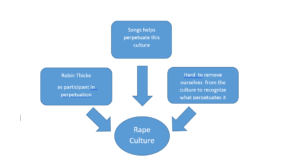Mapping
Education scholar and optometrist Héctor C. Santiago, among others, have found that “visual tools may help . . . students develop better recall, comprehension and critical thinking skills” (137). Mapping is one of those visual tools that can be adapted to various reading purposes and helps readers visually organize information. When you map a text you present visually what the text says. You might map the text as a whole, you might choose a few pages to map, or you might choose a single element to map such as a text’s argument. When you map a text, you become highly aware of the relationships among its different parts, and the visual representation often highlights aspects of the text that aren’t otherwise visible.
Maps come in different shapes and sizes, and can be adjusted to suit your needs. Perhaps the most common is the web or radial map in which the main idea or concept is in the center while threads radiate from it to indicate the connections between the central concept/idea and the other, less central ideas. From those threads come other threads and so on from there. Maps can be developed by hand or with digital, text mapping software. The most important element of any map is that it allows you to see how different elements of a text (e.g. its argument, evidence, characters) are related and structured. Often, these visual representations allow you to recognize relationships you hadn’t noticed while reading.
Maps also underscore the importance of returning to and revising your reading as you visually represent, rank, and connect the different elements of the text since you will likely need to revise your map as you continue reading and re-reading. Annotating a text can help you map it because your annotations draw your attention to the various elements of a text you will need to represent visually.
The radial map on the following page is based on Sarah Davis’ “‘The Blurred Lines’ Effect: Popular Music and the Perpetuation of Rape Culture” (see Chapter 9 for the full text of Sarah Davis’ essay). By placing the concept of rape culture at the center and related issues around it, the student can begin to visualize some of the ways that rape culture is perpetuated, as well as the challenges of recognizing these forces. It is worth noting that this is a very basic version of a map that would be added to over time as the student sought to further explore the connections among these ideas and others in the text.
| Songs helps perpetuate this culture |
Just as this reader would be expected to go back and revise this map in order to incorporate more details, you should imagine that your maps are open to revisions and additions as you read and reread the text you are mapping. Still, this initial map allows you to see how the reader is working toward figuring out what causes and perpetuates rape culture.
Practice Mapping
-
- Choose a reading from this textbook and annotate its first two pages using a reading strategy of your choice. Then use your annotations to develop a map.
- Read the next four pages of the same selection you read in question 1. Now that you have read a total of six pages, return to your map and make necessary changes.
Attribution: This page adapted from “Mapping” (pp.19-20) in A Writer’s Guide to Mindful Reading, by Ellen C. Carrilo, The WAC Clearinghouse, University Press of Colorado (2017). License: CC BY-NC-ND.



